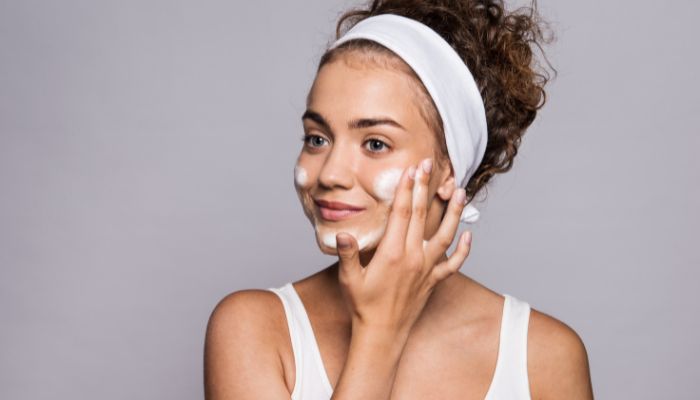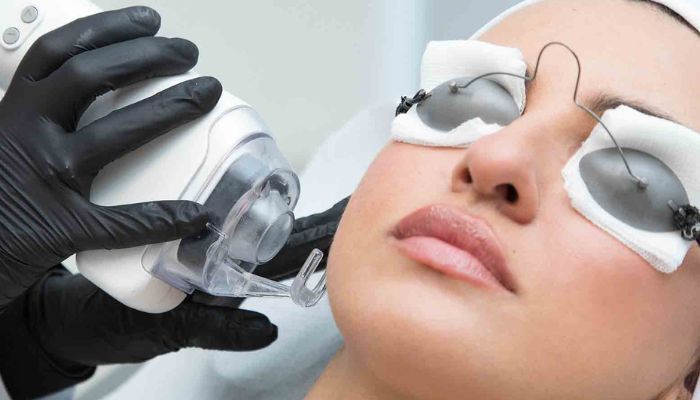As the crisp breeze of autumn sweeps in and the leaves begin to paint the world with hues of red, orange, and gold, it’s not just nature that undergoes a transformation. Your skin, too, experiences shifts as the seasons change. The transition from the sunny days of summer to the cooler, dryer days of fall can have a profound impact on your skin’s health and appearance.
In this essential guide to fall skincare, we’ll explore how to adapt your skincare routine to the evolving needs of your skin during this beautiful but challenging season. From battling dryness and sensitivity to protecting your skin from the changing elements, we’ve got you covered. So, grab your favorite pumpkin spice latte and cozy up, because your fall skin care journey is about to begin.
Table of Contents
Understanding Fall Skin Concerns
As the seasons shift from the warmth of summer to the crispness of fall, our skin undergoes significant changes in response to the evolving weather conditions. Common skin issues that arise during this transition include increased dryness and dehydration, heightened sensitivity, and the need for sun damage repair. The science behind these issues is closely tied to the decrease in humidity levels as cooler air settles in, leading to reduced moisture retention in the skin. Additionally, despite the milder temperatures, UV exposure remains a concern, as the sun’s rays can still cause cumulative damage even in the fall. This understanding is pivotal in tailoring your skincare routine to address these specific autumn challenges effectively.
The Essential Fall Skincare Routine:
Nourish Your Skin from Within
Embracing the unpredictable nature of fall weather, one thing remains certain – your skin’s thirst for moisture increases as summer makes way for autumn. With dropping temperatures and humidity levels, your skin’s natural moisture content gradually diminishes, potentially leading to uncomfortable dryness. To compensate, your skin may overproduce sebum, setting the stage for unwanted breakouts.
To counteract this, prioritize hydrating your skin from within. This involves upping your water intake, incorporating hydrating foods into your diet, considering the use of a humidifier, and integrating hydrating serums and moisturizers into your skincare routine. Seek out humectant ingredients that have a magnetic attraction to water, such as Hyaluronic Acid and Glycerin. This proactive approach ensures your skin remains plump and radiant as the fall season unfolds.
Replace Lightweight Moisturizers with Heavier Creams
Swap out your lightweight summer moisturizers for rich, thick creams as fall approaches. During the humid summer months, a lighter moisturizer suffices, thanks to the extra moisture in the air that keeps your skin looking dewy. However, with the onset of fall, it’s time to make friends with emollient and occlusive ingredients. Emollients, such as Mineral Oil, Shea Butter, Petroleum, Ceramides, and Fatty Acids, work wonders by softening the skin and reducing dryness and roughness. These ingredients provide much-needed hydration. Occlusives, on the other hand, like Squalene, Beeswax, Lanolin, Petrolatum, and Paraffin, play a similar role but go a step further by forming a protective seal on the skin, locking in moisture and shielding it from the changing environmental conditions. This transition to thicker creams helps maintain your skin’s barrier and keep it well-hydrated as the weather turns cooler.

Maintain a Consistent SPF Routine
Staying vigilant with your SPF application is crucial advice recommended by the American Academy of Dermatology. Make it a daily habit to wear sunscreen, even on days when you might not expect strong sun exposure. Whether it’s a windy, snowy, or rainy day, remember that sunlight can penetrate through clouds and reflect off surfaces like water, necessitating the use of SPF protection. So, don’t underestimate the need for sunscreen during the fall season; it’s your shield against sunburns and the free radicals that hasten the aging of your skin.
Take a Step Back from Intensive Exfoliation
While exfoliating ingredients such as AHAs and BHAs offer numerous advantages for your skin, they can also lead to heightened sensitivity, irritation, and redness. In the autumn months, when your skin is already adapting to various changes, it’s a good idea to scale back on the use of chemical exfoliants and potent active ingredients. Instead, shift your focus towards moisturizing and protecting your skin. You can still incorporate a mild exfoliator into your routine, limiting its use to 1-2 times a week to avoid over-exfoliation.
Embrace Facial Oils This Fall
While facial oils might have felt too heavy and greasy for your summer skincare routine, it’s time to reintroduce them this fall. They can play a crucial role in restoring moisture balance during the drier autumn months. Consider incorporating oils like Meadowfoam Oil, Rosehip Oil, Squalane Oil, and Sea Buckthorn Oil into your regimen. These oils are packed with antioxidants, possess anti-inflammatory properties, and provide ample moisture to keep your skin healthy and radiant.
Apply Moisturizing Body Lotion
While skincare routines tend to focus mainly on facial care, it’s crucial not to neglect your body’s skincare needs. As the balmy days of summer transition into the crispness of fall, it’s a perfect opportunity to introduce a body lotion into your routine. The optimal moment to apply body moisturizer is after your shower when your skin is still slightly damp. By generously applying body lotion at this point, you effectively seal in moisture, safeguarding your skin from the discomfort of dryness in key areas like your hands, elbows, knees, and feet during the autumn season.

Your Lips Deserve Attention, Too
As the seasons shift, it’s not uncommon to notice the first signs of skin discomfort on your lips in the form of chapping. To ward off dry, cracked lips, it’s essential to give them the attention they deserve early on. Make it a habit to carry a reliable lip balm with you, whether it’s in your purse or pocket, and apply it regularly throughout the day. Not only will this practice keep your lips well-hydrated, but many lip balms also include protective ingredients that create a barrier, which proves invaluable during brisk, dry, and blustery fall weather.
Special Considerations
Sensitive Skin Types: Sensitive skin requires gentle and hypoallergenic skincare products. Opt for fragrance-free, non-comedogenic, and soothing ingredients like aloe vera and chamomile. Patch test new products and avoid over-exfoliation or using harsh chemicals to minimize irritation.
Specific Skin Conditions (Eczema and Rosacea):
Eczema flare-ups are unpredictable and can be triggered by various temperature and weather shifts throughout the year. However, the fall season presents unique challenges. The combination of chilly outdoor air and the drying effect of indoor heating can leave the skin exceptionally dry and prone to cracking. Additionally, rapid fluctuations between warm and cold days, coupled with brisk winds, can exacerbate skin issues. To make the most of the fall season without eczema flare-ups, consider these tips: Avoid over-dressing and clothing with itchy fabrics, resist the temptation of hot showers, prioritize moisturization, and opt for fragrance-free products.
Managing rosacea during the fall can be achieved with a few essential steps. First, ensure your skincare routine includes gentle, hydrating products that won’t exacerbate redness and inflammation. Secondly, shield your skin from harsh winds and cooler temperatures by wearing a scarf or a hat. Third, maintain a consistent routine to prevent triggers and flare-ups, including avoiding spicy foods and excessive alcohol consumption.
Consult with a dermatologist for personalized guidance and potential prescription treatments to keep rosacea and eczema symptoms in check throughout the fall season.
Conclusion
In conclusion, as the leaves change their colors in the fall, so too should our skincare routines. Understanding the unique challenges that this season brings, such as dryness, increased sensitivity, and the need for sun damage repair, allows us to adapt and thrive. By following the essential fall skincare routine, embracing the right ingredients, and considering special considerations like sensitive skin and specific skin conditions, you can make the most of this beautiful season without compromising your skin’s health. Remember, a balanced approach that focuses on hydration, protection, and gentle care will help you enjoy the autumn while maintaining a radiant and healthy complexion.Happy Fall, and here’s to your glowing, gorgeous skin!



